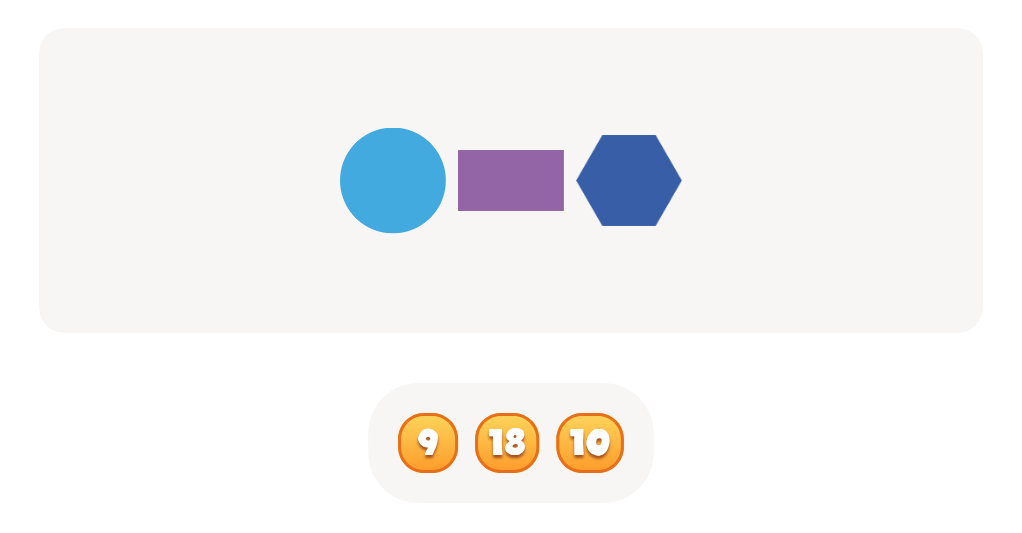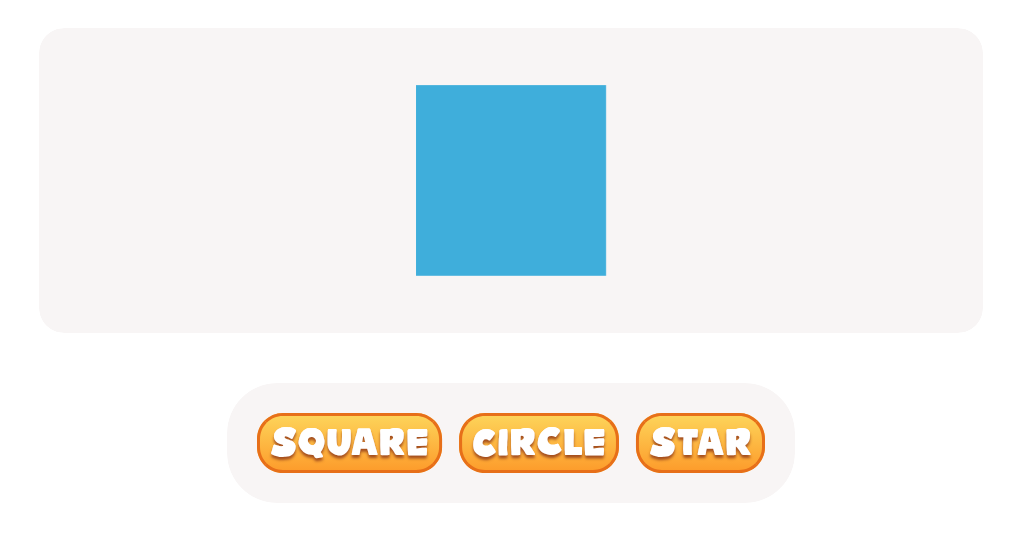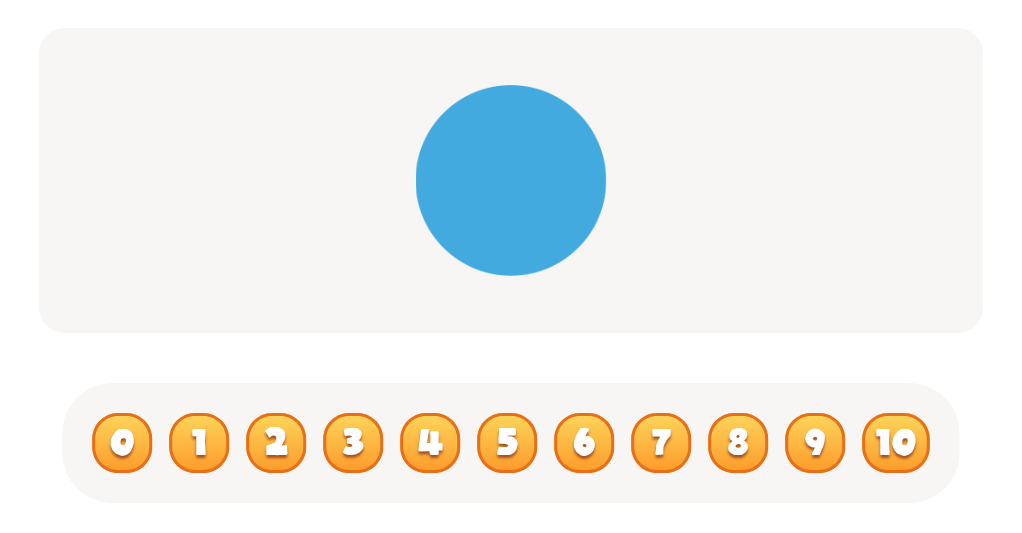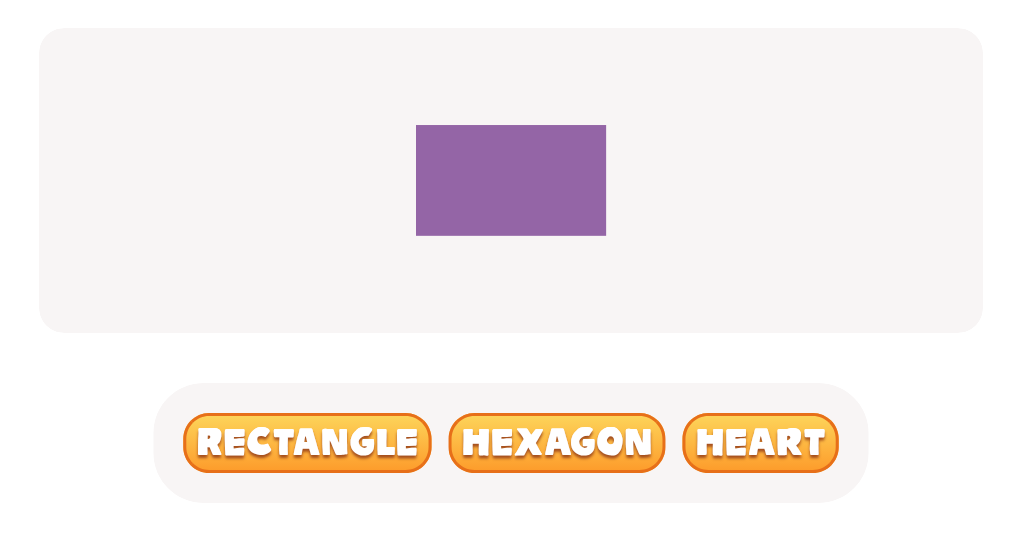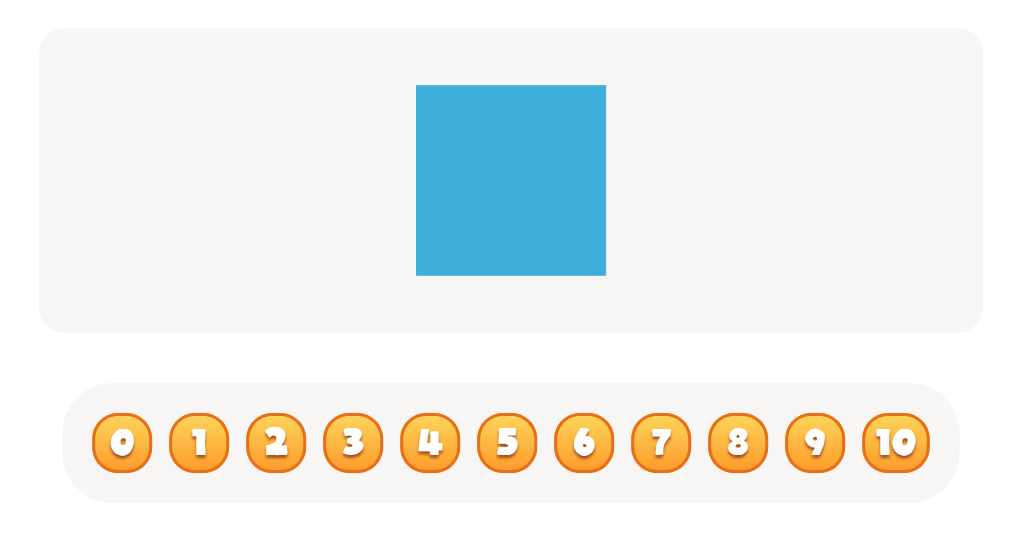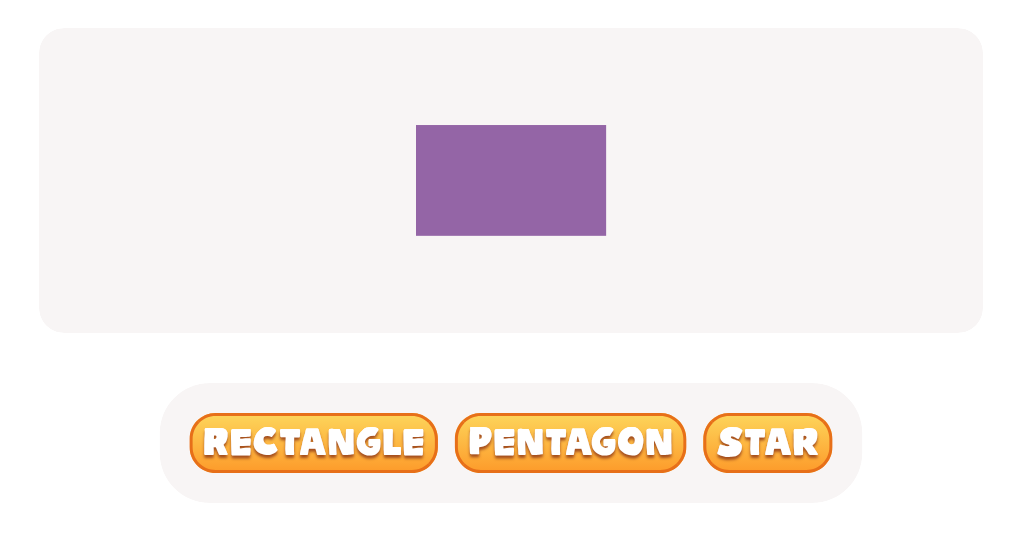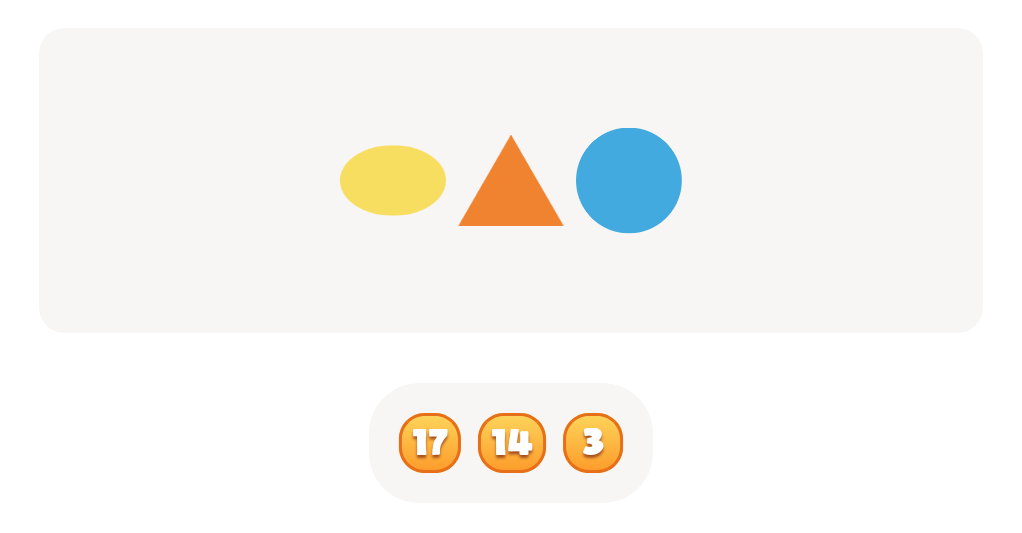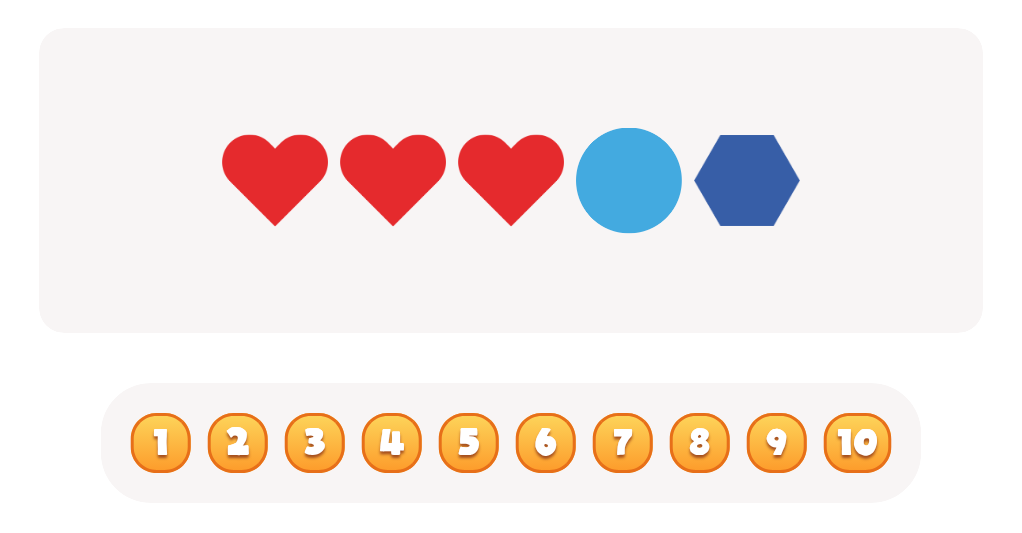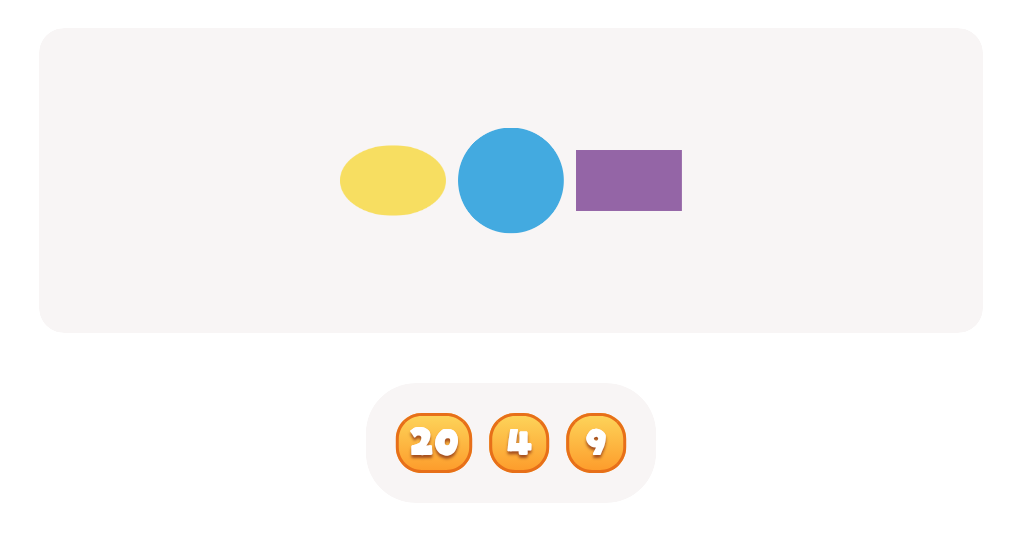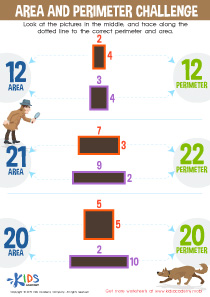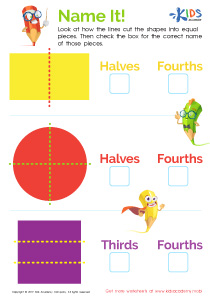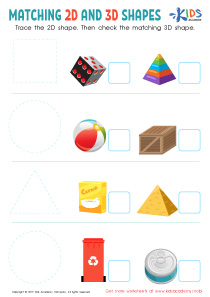Recognizing shapes 2D Shapes Worksheets for Ages 3-9
5 filtered results
-
From - To
Welcome to our "Recognizing 2D Shapes Worksheets" page, designed for children ages 3 to 9! These engaging worksheets provide young learners with the tools to identify and differentiate various 2D shapes, including circles, squares, rectangles, and triangles. Each activity encourages creativity and critical thinking through fun exercises like tracing, coloring, and matching shapes. By incorporating these interactive resources into your child's learning routine, you'll help enhance their cognitive skills and shape recognition abilities. Explore our extensive collection of worksheets and discover how fun learning about shapes can be! Start your child's educational journey today with our vibrant and informative resources.


Congruent Shapes Worksheet


Lines of Symmetry Printable


Geometry: part 1 Worksheet
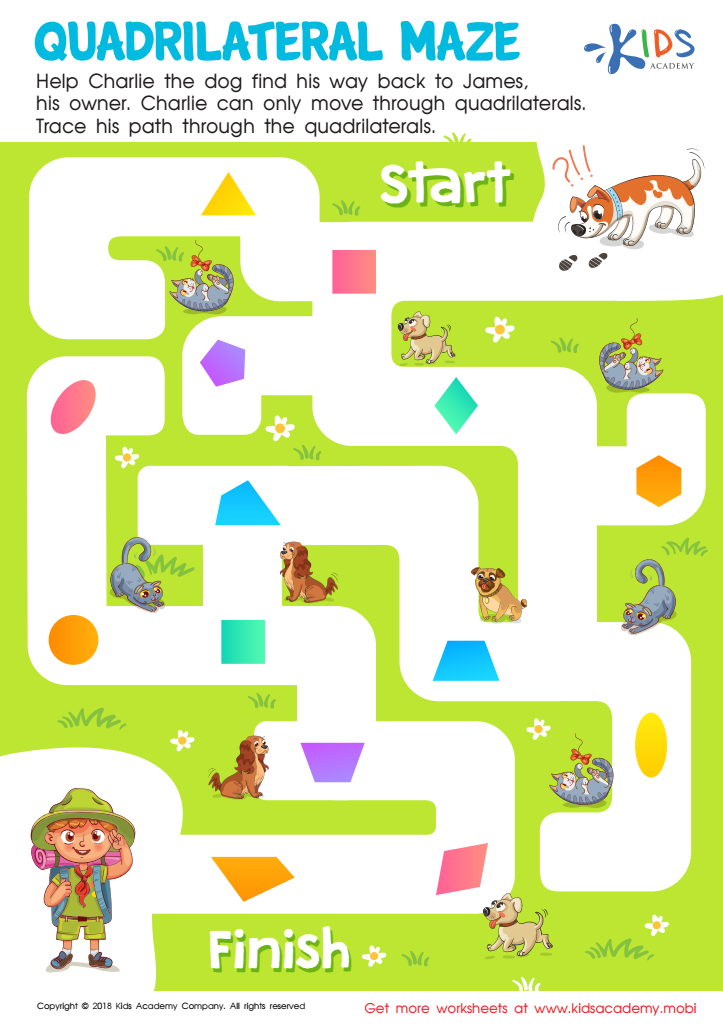

Quadrilateral Maze Worksheet
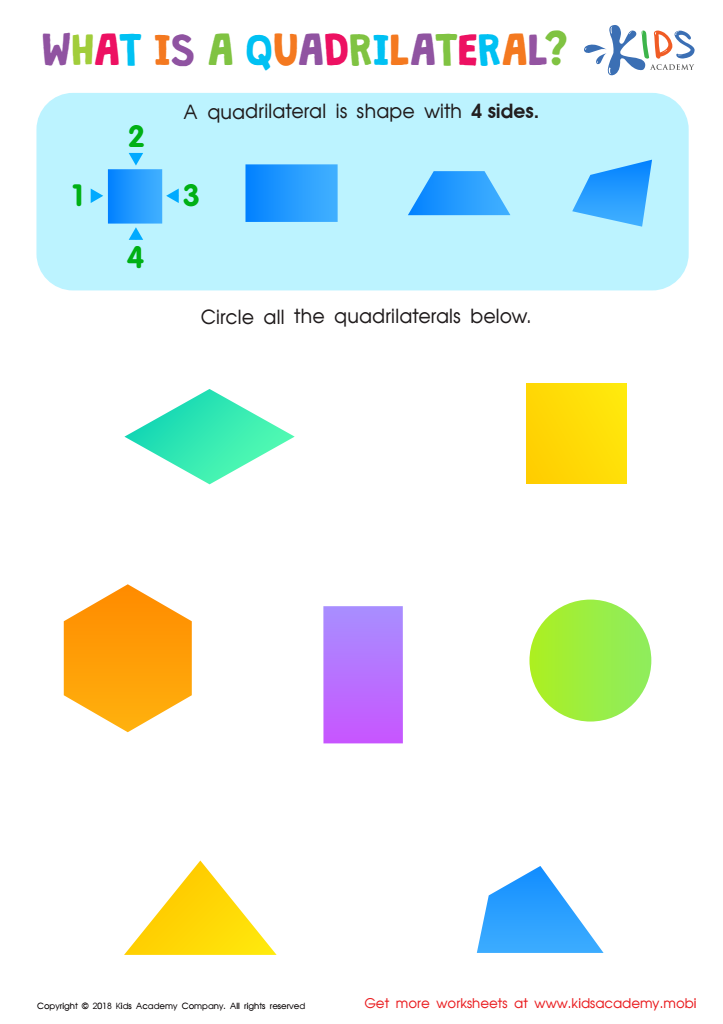

What Is a Quadrilateral? Worksheet
Recognizing 2D shapes is a foundational skill in early childhood education, integral to cognitive development for children aged 3-9. Understanding shapes not only provides the building blocks for geometry but also enhances critical thinking and problem-solving skills. When children learn to identify and differentiate shapes such as circles, squares, and triangles, they engage in hands-on learning that boosts their spatial awareness and fine motor skills.
Parents and teachers facilitate learning by incorporating shape recognition into everyday activities. For example, during playtime, guiding children to sort objects by shape fosters categorization skills and promotes mathematical thinking. Engaging in shape-related games or arts and crafts also encourages creativity, allowing children to explore their environment in a playful manner.
Moreover, early shape recognition aids in literacy development. For instance, many alphabet letters are based on shapes, and understanding them contributes to early reading skills. By promoting shape recognition, caregivers create a foundation for future academic success across diverse subjects.
Lastly, recognizing shapes encourages essential social interactions through collaborative activities, helping children develop communication and teamwork skills. Thus, fostering shape recognition during these formative years is vital for holistic development and a positive educational journey.
 Assign to My Students
Assign to My Students
